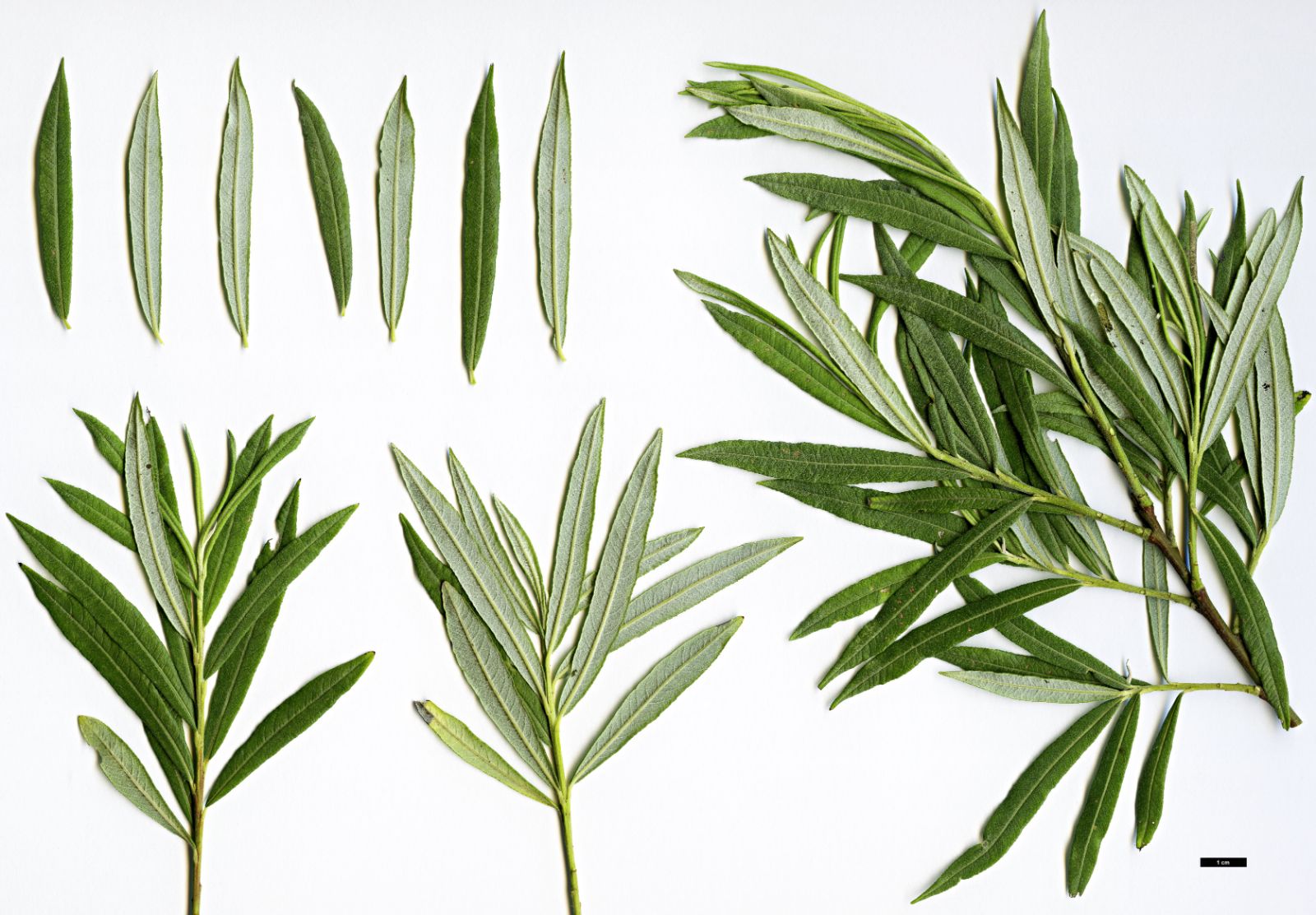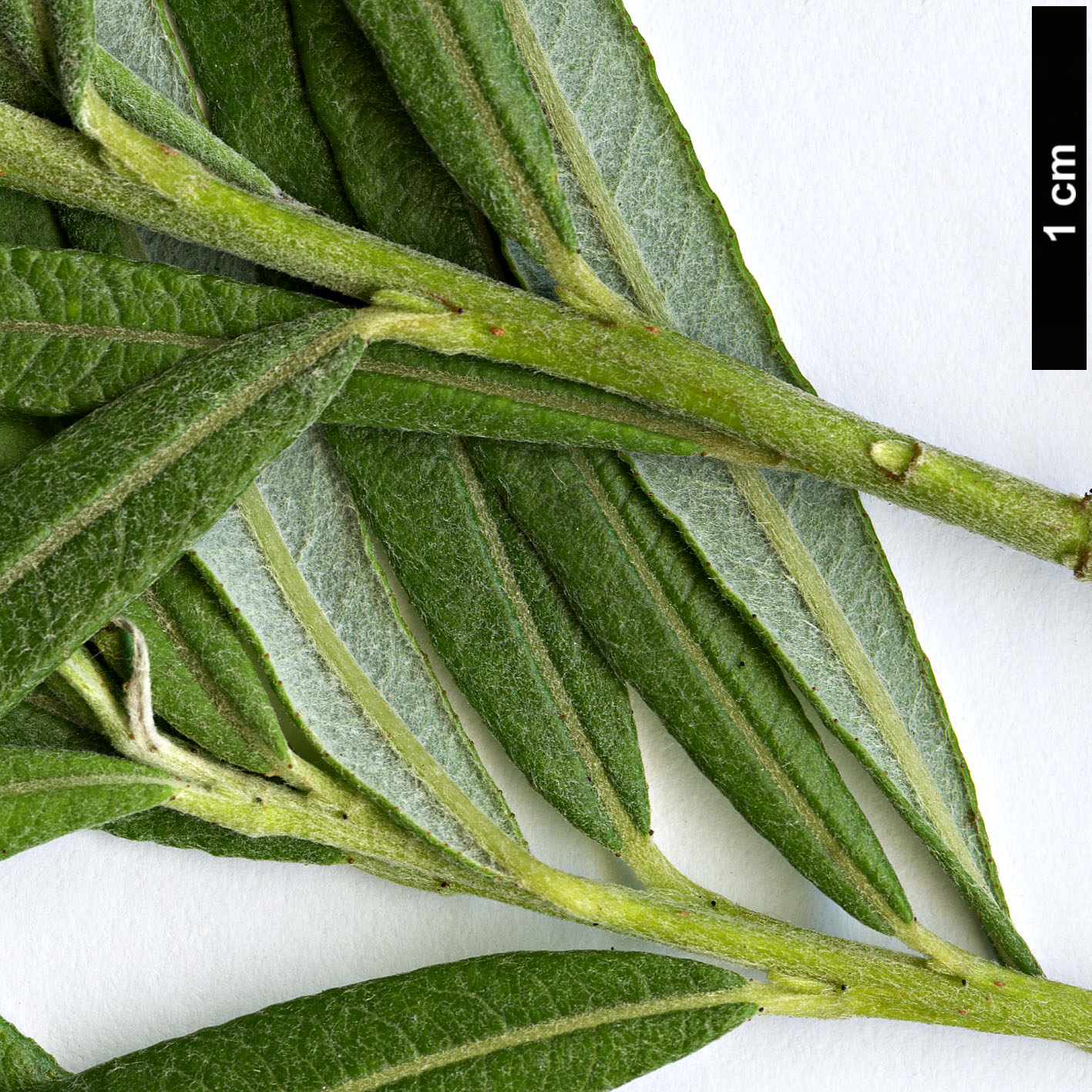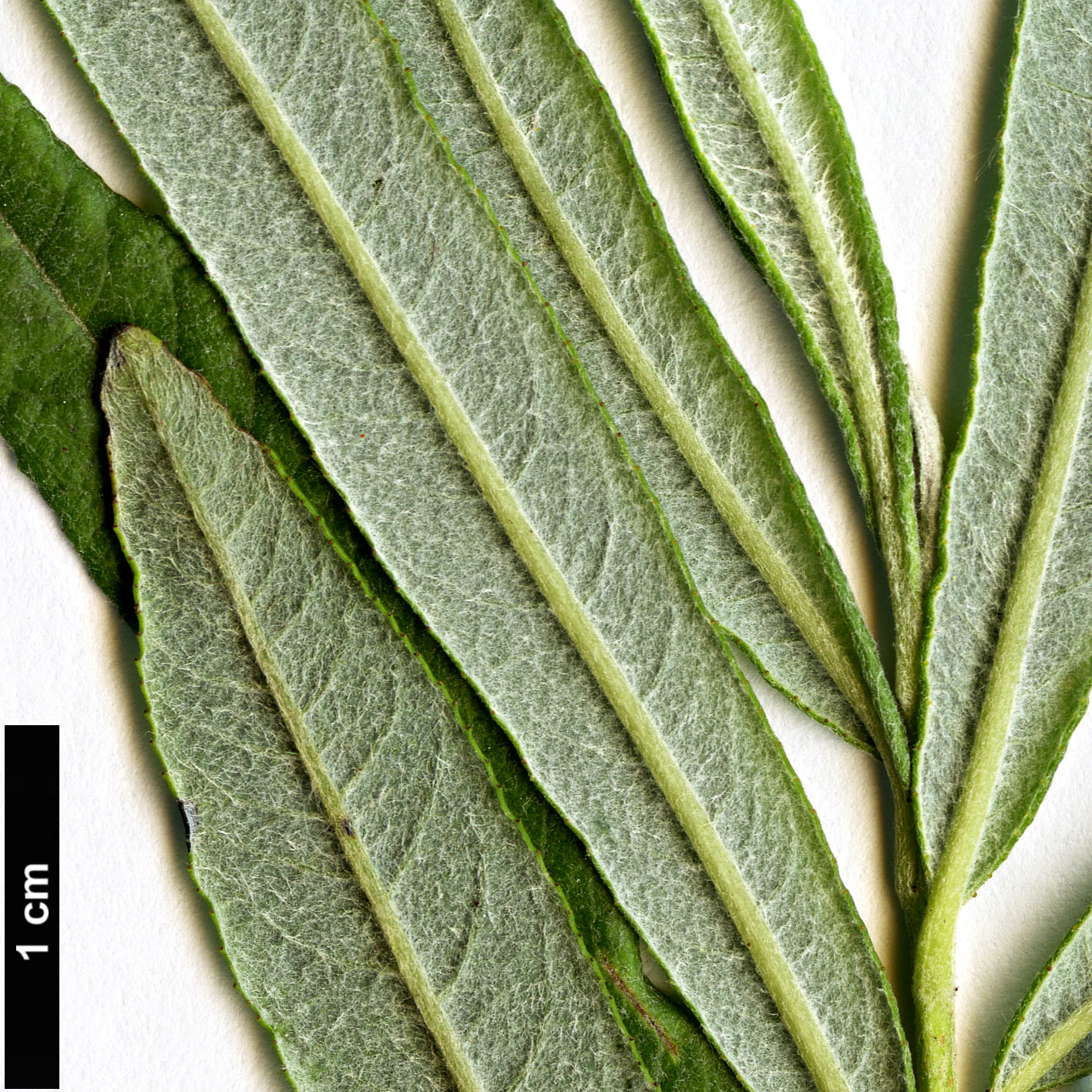Salix elaeagnos
Credits
Article from Bean's Trees and Shrubs Hardy in the British Isles
Recommended citation
'Salix elaeagnos' from the website Trees and Shrubs Online (treesandshrubsonline.
Genus
Synonyms
- S. incana Schrank
- S. rosmarinifolia Host, not L.
- S. riparia Willd.
Other taxa in genus
- Salix aegyptiaca
- Salix alba
- Salix amygdaloides
- Salix arbuscula
- Salix arbutifolia
- Salix arctica
- Salix aurita
- Salix babylonica
- Salix bockii
- Salix 'Boydii'
- Salix caesia
- Salix candida
- Salix caprea
- Salix cinerea
- Salix cordata
- Salix daphnoides
- Salix discolor
- Salix exigua
- Salix fargesii
- Salix fragilis
- Salix glabra
- Salix glaucosericea
- Salix gracilistyla
- Salix hastata
- Salix herbacea
- Salix hookeriana
- Salix humboldtiana
- Salix irrorata
- Salix japonica
- Salix jessoensis
- Salix lanata
- Salix lapponum
- Salix lasiandra
- Salix lindleyana
- Salix lucida
- Salix magnifica
- Salix matsudana
- Salix × meyeriana
- Salix × mollissima
- Salix moupinensis
- Salix myrsinifolia
- Salix myrsinites
- Salix myrtilloides
- Salix nakamurana
- Salix nigra
- Salix nigricans
- Salix pentandra
- Salix petiolaris
- Salix phylicifolia
- Salix purpurea
- Salix pyrenaica
- Salix pyrifolia
- Salix repens
- Salix reticulata
- Salix retusa
- Salix rigida
- Salix × rubra
- Salix sachalinensis
- Salix scouleriana
- Salix × sepulcralis
- Salix × sericans
- Salix sericea
- Salix silesiaca
- Salix starkeana
- Salix × subalpina
- Salix triandra
- Salix uva-ursi
- Salix viminalis
- Salix wilhelmsiana
A shrub of dense, very leafy habit, bushy, up to 8 or 12 ft high, half as much more in diameter, rarely a small tree; young shoots clothed with a fine grey felt at first, becoming glabrous later; buds yellowish. Leaves linear, tapered at both ends, 2 to 5 in. long, 1⁄8 to 7⁄8 in. wide, made narrower by the decurved margins, dark green and glabrous above, covered with a blue-white felt beneath. Catkins erect, slender; females 1 to 11⁄2 in. long, males shorter, appearing with the young leaves in April and May. Stamens two, connate for up to one-half their length.
Native of southern and central Europe, and of Asia Minor; introduced about 1820. In the Alps it occurs, usually on limestone, in the valleys of the larger rivers, ascending along streams into the subalpine zone, and is often associated with Hippophae rhamnoides. It varies in the width of its leaves, and the cultivated plants, which mostly have them no more than 3⁄16 in. wide, should strictly be distinguished as subsp. angustifolia (Cariot) Rech. f.; no doubt the stock came originally from southern France or Spain, to which this narrow-leaved subspecies is said to be confined. It is one of the prettiest and most effective of the bush willows in foliage. Its leaves resemble those of S. viminalis only they are not so coarse, nor so glistening beneath. Very desirable for the banks of ponds, etc.
S. elaeagnos is the only member of the section Canae. It is quite closely allied to the section Vimen (S. viminalis and its allies) but with a different leaf-indumentum. The partial union of the stamens is also seen in S. gracilistyla (q.v.).
S. × seringeana Gaud. – This natural hybrid between S. elaeagnos and S. caprea bears some resemblance to the osier-sallow hybrids (see S. × sericans). But the indumentum is more woolly, the leaves more parallel-sided, often more grey-hairy above when young, and the catkins more slender.



